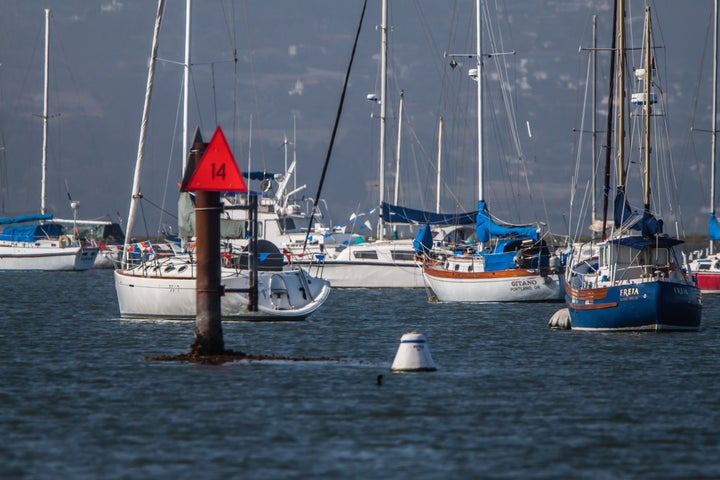
The World Trade Organization (WTO) did not take the bait: last month it issued its final ruling on U.S. "dolphin-safe" labeling standards for tuna, giving Mexico, sustainable fishing and the global environment a resounding victory. The verdict, moreover, is a win-win equation: a major step forward towards resolving one of the oldest trade disputes between Mexico and the United States, and a boon for U.S. consumers.
With this decision, the WTO brought to the surface facts that for many years special interests in the U.S. had submerged under water. The ruling found that U.S. "dolphin-safe" standards are discriminatory because they create an illegitimate distinction focusing on one method of independently verified sustainable fishing for tuna in the case of Mexico while disregarding extensive evidence of harm to dolphins that is occurring with the fishing of tuna in the rest of the world. It held that these measures undermined their stated objective of providing full and accurate information to consumers about harm to dolphins in the capture of the tuna bearing the "dolphin-safe" label, thus deliberately misleading them.
Contrary to perception, the label does not provide a clean sheet regarding mortalities or injuries of dolphins caused in the capture of the tuna, even though mortalities do, in fact, occur. This "dolphin-safe" standard employed by the U.S. has actually incentivized predatory and unsustainable fishing practices such as the use of fish aggregating devices (FADs) which result in levels of by-catch that can exceed fifty percent of the catch; a by-catch of sharks, turtles, billfish and juvenile tunas, most of which are thrown back dead into the sea. These fishing methods are being decried by responsible environmental groups for their significant adverse impact on the sustainability of fisheries. And under pressure by the "big fishes" of its industry, the U.S. has maintained an outdated "dolphin-safe" legislation perpetuating a standard that does not require any independent observer certification that dolphins were not encircled to capture the tuna -- only the self-certification of an economically interested captain of the fishing vessel. In fact, in a welcome move, preeminent U.S. retailers have recently announced that they will not purchase tuna captured with these deadly devices.
A high dolphin mortality rate in the Eastern Pacific was indeed prevalent in the 1980s, but has been virtually eliminated. It was precisely the fact that hundreds of thousands of dolphins were dying in that fishery, where the U.S., Mexican and many other fleets were active, that brought Mexico and the United States governments to join forces and work with other countries to develop and implement the Agreement on the International Dolphin Conservation Program (AIDCP), a binding multilateral framework which has arguably become the most successful and highly acclaimed fishery and resource management regime in the world, and that resulted in the sharp reduction in dolphin mortality to significantly less than one percent of the population in the Pacific.
Ironically, the Eastern Pacific tuna fishery is the only one where those protections are in place, yet Mexican tuna products caught in that region remain ineligible for the "dolphin-safe" label. Nonetheless, the Mexican tuna fishing fleet continues to operate in accordance with international norms, which require certification of ship captains, comprehensive improvements in specially designed gear and fishing techniques to ensure that dolphins are released safely if encircled, and mandating independent scientific observers on board every vessel and for every set of nets to ensure full compliance with the approved procedures. These independent observers have certified that the mortality rate of dolphins regarding the Mexican fleet is close to zero percent. In addition, the fishing method used by Mexican fisheries not only provides certified protection of dolphins, but also of the tuna biomass and avoids the capture of juvenile tuna and other species.
Now that the dolphin mortality crisis has been addressed successfully in the Eastern Pacific, we must stop swimming against the tide and turn our collective attention to the real environmental and sustainability challenges that still face us. Unaddressed by the current U.S. "dolphin-safe" measures are the thousands of dolphin deaths that are occurring in tuna fisheries of the U.S. and around the world. It is time to recognize that some companies that fish and sell tuna under the "dolphin-safe" label do not accord dolphins the same protection as the Mexican fleet, and it is also time for them to face the facts, just like the Mexican fleet did years ago.
Mexico strongly supports and fully observes the right of each country to set its environmental standards as stringently as it wishes. But the attainment of sustainable fisheries will only be guaranteed by abiding with multilateral environmental agreements. The WTO has performed its role well in this case. It is time for the United States tuna industry to fish or cut bait and bring its measures in line with current scientific data so that the governments of Mexico and the U.S. can continue working to protect the marine environment, as we have successfully been doing in the past.
The author is Mexico's Ambassador to the United States of America.
